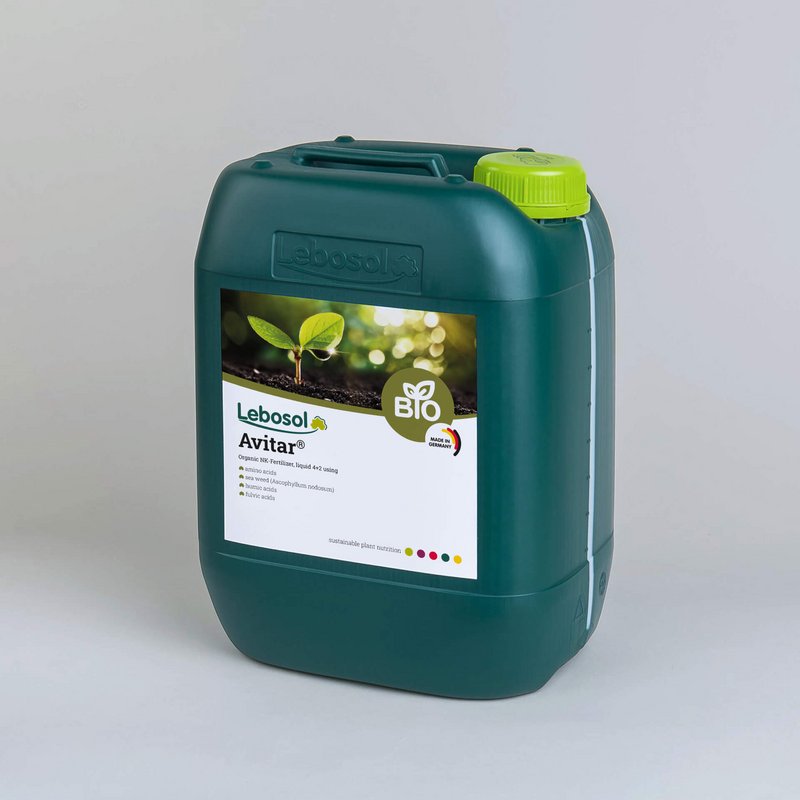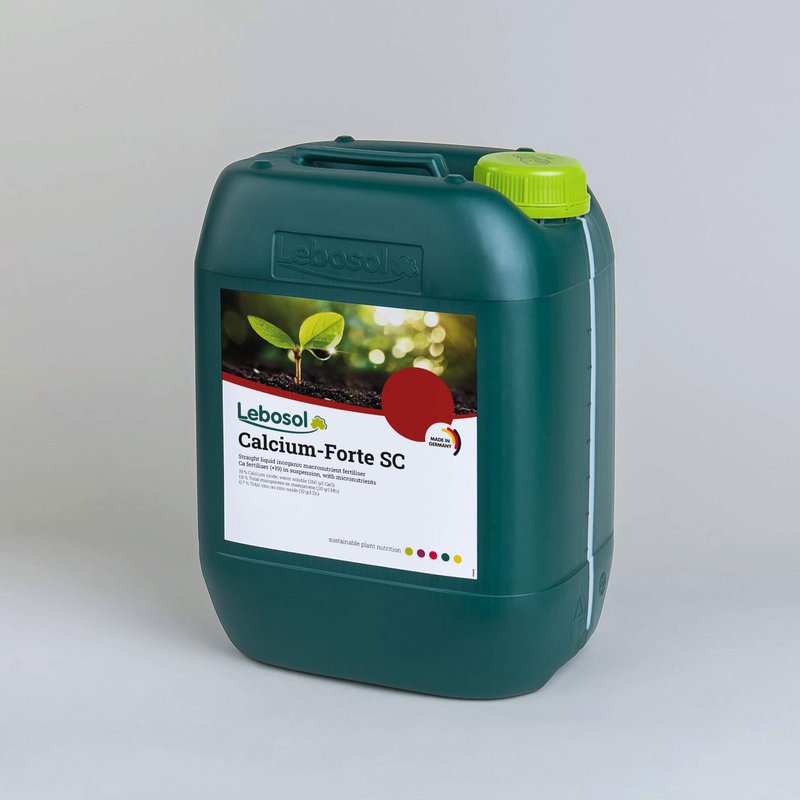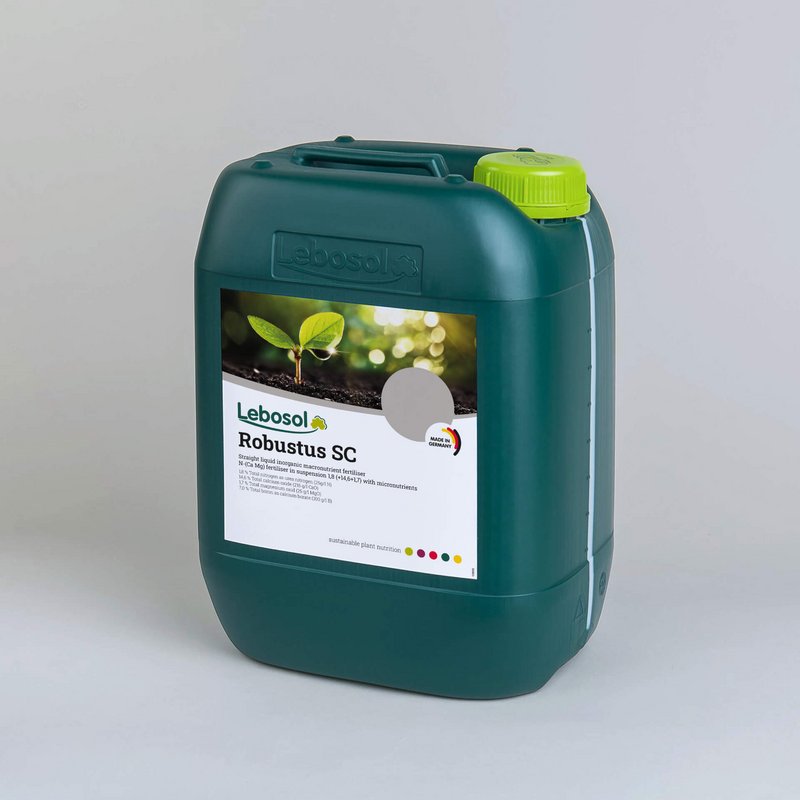Optimal foliar fertilisation for pome fruit
Effective fertilisation in fruit growing
Foliar fertilisation ensures a fast and effective supply of nutrients, which is essential for vital crops, high fruit quality and improved storage stability. Climate change is increasing the challenges in pome fruit cultivation. Sunburn and a lack of water often lead to nutrient deficiencies, which initially affect the fruit quality and later the performance of the trees. Foliar fertilisation is therefore a proven means of compensating for visible and latent deficiencies.
Even if the soil nutrient supply is optimised, it is not always possible to ensure that the trees are supplied with the nutrients they need. Factors such as high or low pH values, drought, wet or cool weather limit the availability of nutrients. Antagonisms between the elements, such as an excess of potassium, which inhibits the uptake of magnesium and calcium, also play a role. This is where foliar fertilisation comes in, by promoting direct nutrient uptake via the leaves and thus ensuring a targeted supply.

Potassium and boron: protecting pome fruit from frost
Targeted fertilisation for robust flowers
Potassium strengthens the plants' resistance to drought and frost. Boron is crucial for flower quality and the frost tolerance of the flowers and supports calcium uptake. Our recommendation for pome fruit:
1 - 2 applications with Aminosol® (2 l/ha), Lebosol®-AqueBoron SC (2 l/ha) and Lebosol®-Potassium 450 (5 l/ha) can increase the resistance of the flower buds. Apply at least 5 days before a frost event to strengthen and protect the buds or flowers.
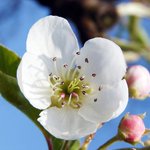
Boron and zinc: Optimum flower and fruit set promotion
Nutrient combination for healthy fruit trees
Boron in combination with calcium (in Lebosol®-Robustus SC), zinc (Lebosol®-Zinc 700 SC) and amino acids (Aminosol®) have a positive effect on pollen tube growth, flowering and fruit set. This mixture can be applied before flowering or after the harvest. The application of Lebosol®-Robustus SC before flowering also leads to better colouring of the apples. Boron and zinc also promote calcium uptake and thus support blossom quality and fruit set.
Zinc is particularly important for flower quality and fruit size growth. It increases the stability of the plants against radiation stress and thus reduces sunburn. We recommend 2 - 4 times 0.5 l/ha Lebosol®-Zinc 700 SC + 2 l/ha Lebosol®-Robustus SC to support blossom formation in apple cultivation.
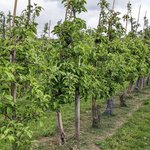
Preventing leaf spot and leaf fall
Foliar fertilisers from Lebosol® help
Certain apple varieties, such as Golden Delicious, Jonagold, Elstar, Gala and Cox, often suffer from nutritional leaf necrosis and premature leaf drop. This is often caused by a lack of magnesium and/or manganese. With the products Lebosol®-Magnesium 400 SC and Lebosol®-Manganese 500 SC, Lebosol® offers an effective solution to prevent these deficiency symptoms and to strengthen the apple trees.
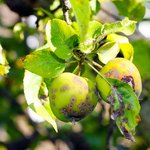
Measures against scab on pome fruit
Fertilising with silicon helps at an early stage
Silicon, although not a vital element, nevertheless plays an important role in the stress resistance of plants. It is stored in the cell walls and thus strengthens the stability and resistance of plants to various stress factors. Our recommendation for foliar fertilisation is 2 - 4 times 1 l/ha of Lebosol®-Silicon from the balloon stage.
Silicon also regulates the nutrient balance and increases resistance to heat, drought stress and diseases.
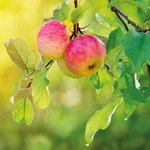
Calcium foliar fertiliser for resistant and shelf-stable fruit
Optimum fruit quality through targeted nutrient supply
Calcium plays a central role in stabilising the cell walls and cell membranes of fruit trees. A sufficient calcium content strengthens the cell walls and improves fruit firmness, which leads to greater resistance to blight and storage browning. Precipitation promotes potassium uptake, but this can inhibit the uptake of calcium and magnesium. The use of foliar fertilisers such as Lebosol®-Calcium-Forte SC can provide a remedy, especially for pome fruit.
With 5 - 8 litres/ha of Lebosol®-Calcium-Forte SC, applied 2 - 6 times at the end of flowering, the fruit quality and storability is significantly improved.
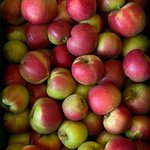
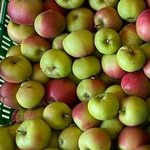
More fruit weight and better colour expression
Avitar® - Strengthening and colouring of pome fruit
Avitar® is an organic NK fertiliser with an anti-stress effect, consisting of amino acids, humic and fulvic acids and algae extracts. In pome fruit cultivation in particular, the quality parameters are strongly influenced by the weather and the trees are often exposed to stress factors such as drought, wetness, cold, heat or radiation. The use of Avitar® can have a positive influence on plant development thanks to its biostimulating effect.
In a two-year trial, it was shown that the tree canopy regulates itself with Avitar®, which reduces the reject rate and improves fruit quality. In addition, the apples showed better colouring and less russeting.



